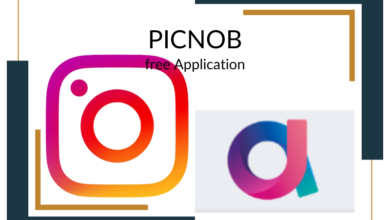The healthcare industry is changing quickly, as advances in technology are being applied to improve the delivery of care. From cloud computing to AI-driven medical solutions, we explore the top trends that will shape the Healthcare Technology of the Future.
As the healthcare industry continues to shift, companies in the industry need to keep up with the changes. Technology is changing quickly, and companies that do not have a plan for how their business will be affected. Cloud computing is an example of how technology is being used in the healthcare industry. With cloud computing, providers can manage patient data more effectively and provide better care at a fraction of the cost.
Wearable Technologies in Healthcare.
Wearable technologies, such as fitness trackers, are having an increasingly larger role in healthcare. By wearing sensors on their body and linking them to mobile devices, patients can track fitness levels, and monitor vital signs. And even detect the risk of developing chronic conditions like diabetes. The advantages of wearable Healthcare Technology of the Future include convenience for patients by reducing time spent at the doctor’s office. Access to more accurate and detailed data than that collected during routine doctor visits. And potentially early detection of significant health problems before they get too serious.
The problem is that these data are often collected anonymously, and privacy concerns have led to several lawsuits involving the collection of patient data by companies such as Fitbit. In the case of the Apple Watch, the company has said that it will never ask for permission to access your data. Still, several companies have been trying to convince users that they’re not spying on them or tracking their activity. The company’s restrictions on apps make some sense, given that the Apple Watch is a device that you wear on your wrist. But it’s not clear why the company would prevent developers from using the data it has collected — or why its apps wouldn’t be able to access this data.
Blockchain Healthcare Technology of the Future
Blockchain technology is another breakthrough in healthcare that’s revolutionizing the industry. This cybersecurity offering enables data storage, transfers, and sharing to be conducted securely, quickly, and transparently. With blockchain technology, medical records can be accessed by any authorized healthcare professionals–including paramedics, physicians, pharmacists, and hospital staff. Blockchain also allows for real-time tracking of pharmaceutical shipments globally, preventing fraudulent medications from entering the supply chain.
As this technology continues to evolve and become more widely adopted. We will start to see huge strides in healthcare efficiency and security! I will give you a heads-up that I am working on developing this app for the healthcare industry. I will be releasing this as open-source software and any healthcare provider can download it. This app is not a medical device; it is intended to be used by healthcare professionals.
Telemedicine and Remote Patient Monitoring.
Telemedicine is revolutionizing the way healthcare is delivered as it allows patients to receive care remotely. By utilizing video conferencing and applications, providers can deliver care virtually without ever having to meet in person. Additionally, remote patient monitoring enables continuous monitoring of a patient’s clinical data from any location. This data can then be viewed by healthcare professionals, allowing for early detection of problems and Cloud computinginical outcomes for patients.
Telemedicine is also becoming a critical component in emergency care. Using telemedicine technology, emergency physicians can quickly access patient data without the need to travel to the hospital. “In emergencies, a physician’s assessment of the patient’s condition is paramount. And we can help patients with this process by providing emergency physicians with more data to make quick decisions.
Cloud Computing & Telehealth
Cloud computing has become central to the efficient functioning of healthcare today. Collaborate with medical professionals to access patient data quickly and securely, collaborate on clinical studies, store large amounts of historical patient information, share knowledge and resources with other healthcare providers, and more. With the combination of cloud computing and telehealth solutions, virtual visits with physicians have become increasingly popular.
These allow patients to consult with their doctors from the comfort of their own homes as well as remote areas that are hard to reach by in-person services! The first wave of telehealth services was pioneered by the University of California at San Francisco in the 1960s, with a partnership between UCSF and Hewlett-Packard. Since then, there have been many other companies that have jumped into this space: SkyMed, Telehealth Inc. (now part of Intriage), and others. But there are still a lot of regulatory barriers in place that prevent telehealth services from being offered to patients, and the industry is growing in smaller ways.
Artificial Intelligence (AI)
Artificial intelligence (AI) has the potential to revolutionize the Healthcare Technology of the Future. It can be used to diagnose and treat patients more accurately, allowing physicians to spend more time with their patients. AI can collect and systematize data, enabling doctors to make better-informed decisions based on larger amounts of information. AI may also be able to predict patient outcomes useful for both diagnosis and treatment planning – by mining large volumes of pre-existing data.
By providing a more complete analysis of trends in health data. AI could pave the way for earlier diagnoses and treatments with greater precision. Democracy and AI. The world’s democracies are increasingly important for AI adoption, especially in the context of potential conflicts with authoritarian regimes. For example, a democratic regime may be able to use AI to prevent any domestic opposition from taking action. The same is true of a non-democratic regime. Conversely, AI could be used to empower the opposition by using democratic principles to address problems like corruption, inequality, and poor governance.
Conclusions
The healthcare technology of the future is not just about new and innovative treatments. But also about staying healthy and avoiding disease. With advancements in technology, there are many different ways to keep your healthcare expenses down and help you stay healthy. The future holds many possibilities and challenges, but the technologies that are already in use are great.
There is no doubt that healthcare technology has come a long way in the past decade. However, many exciting and potential new therapies haven’t been developed yet. This is why hospitals and doctors need to keep an eye on the latest trends in healthcare technology. So they can stay ahead of the curve and provide patients with the best possible care.






Thanks for your marvelous posting! I quite enjoyed reading it, you may be a great author.I will make sure to bookmark your blog and may come back from now on. I want to encourage you continue your great posts, have a nice holiday weekend!
Hello. excellent job. I did not expect this. This is a remarkable story. Thanks!
Write more, thats all I have to say. Literally, it seems as though you relied on the video to make your point. You clearly know what youre talking about, why throw away your intelligence on just posting videos to your site when you could be giving us something enlightening to read?